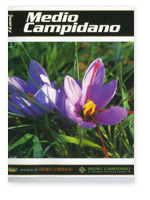Skip navigation bar and go to contents
Vivere la campagna
 Agricoltura
Agricoltura
 Ambiente
Ambiente
 Bilancio e Patrimonio
Bilancio e Patrimonio
 Consigliera di Parità
Consigliera di Parità
 Cultura
Cultura
 Formazione Professionale
Formazione Professionale
 Immigrazione/Emigrazione
Immigrazione/Emigrazione
 Innovazione Tecnologica
Innovazione Tecnologica
 Lavori pubblici e Viabilità
Lavori pubblici e Viabilità
 Lavoro
Lavoro
 Personale
Personale
 Pianificazione Territoriale
Pianificazione Territoriale
 Politiche giovanili
Politiche giovanili
 Politiche Sociali
Politiche Sociali
 Protezione civile
Protezione civile
 Pubblica Istruzione
Pubblica Istruzione
 Sport
Sport
 SUAP
SUAP
 Trasporti
Trasporti
 Turismo
Turismo
 URP
URP

n.26/2009 -
Our trip to the discovery of the good old days begins in the alleys of the small towns and villages, where we walk on cobblestone paving between the high walls which hide households from the outside world. The privacy of family life is only interrupted by ceremonies and feast days, when dances, songs and banquets are held in the squares and alleys of the village or round the small country churches. On these occasions the women wear their colourful traditional costumes one of the most fascinating elements of Sardinian culture for visitors. The clothing worn during these festivities is that of wedding celebrations, much more complex and precious than those worn in daily life.The male costume is plainer and practical:starting from the head covering, sa berretta, in the past made of orbace (rough woollen cloth), nowadays of smooth black cloth, of varying length; at Sanluri it is made of leather, truncated cone in shape, at Villanovafranca the forehead is covered by a red scarf. The shirt (sa camisa) is generally of white cotton, with an upright, Korean collar. Sa roda (short skirt) is black, in orbace or smooth c1oth, at times with a velvet border; at Villanovafranca a bright red scarf is worn at the waist. Is bragas (the trousers) are mostly identical in all towns while differences are found in the colours and styles of the waistcoat (su croppettu) which may be black and made of orbace (Arbus) or smooth cloth (Villacidro Serrenti) whereas at Tuili it is made of brown velvet in the front and green velvet at the back; it is worn either open or closed with filigree buttons. The male costume of Sanluri is different from alI the others, since it includes su collettu, a tanned leather waistcoat, sleeveless and reaching to the knees. The traditional female costume is far richer and more complex. The head covering consists of a brown or black shawl embroidered with floraI motifs; the head is covered by a white kerchief, su mucadori, which at Tuili is worn tightly tied behind the head, whereas at Serrenti su trubanti is worn, in red cloth. The blouse is either in linen, cotton or cloth, always loose fitting, white and with embroidered bib and cuffs; over it a waist coat is worn (su cropettu) in brocade of varying colours and flower designs, fastened with hooks or coloured ribbons. The skirt is usually brown, pleated behind and to the sides smooth in front and worn with an apron (sa vascadroxia) in silk brocade (Arbus), black satin (Serrenti, Villanovafranca) or brocatel (Villamar). Jewellery consists of brooches, necklaces and gold buttons, alI in filigree: the austerity of country life has never permitted the women of the Medio Campidano to flaunt the rich jewellery in use in other areas of Sardinia. Today, the traditional costumes of Sardinia are still made by skilled artisans thanks to the work of associations and folklore groups present in many municipalities: Sa Jara, Via Roma 33, Tuili; Lunamatrona, Piazza Regina Elena 11, Lunamatrona; Santu Juanni, Via Firenze 1, Pabillonis; Sant'lsidoro, Via Cagliari 70, Samassi; Città di Siddi, Via Milano 4, Siddi; Puccini, Via dell'Alleanza 6, Villamar; Madonna della Salute, Piazza Risorgimento 18 c/o Municipio, Villanovafranca; Santa Vitalia, Via Garibaldi 22, Serrenti; Su Enau, Via Sardegna, Villanovaforru; Su Stentu, Via Turati 34, Serramanna; Su Pottabi, Samassi; Sant'Antonio, Via Genn'e Frongia, Arbus; Sant'lsidoro, Gonnosfanadiga; Montegranatico, Via Monsignor Romero 1, Guspini; San Giorgio, locality Santa Maria, Segariu.